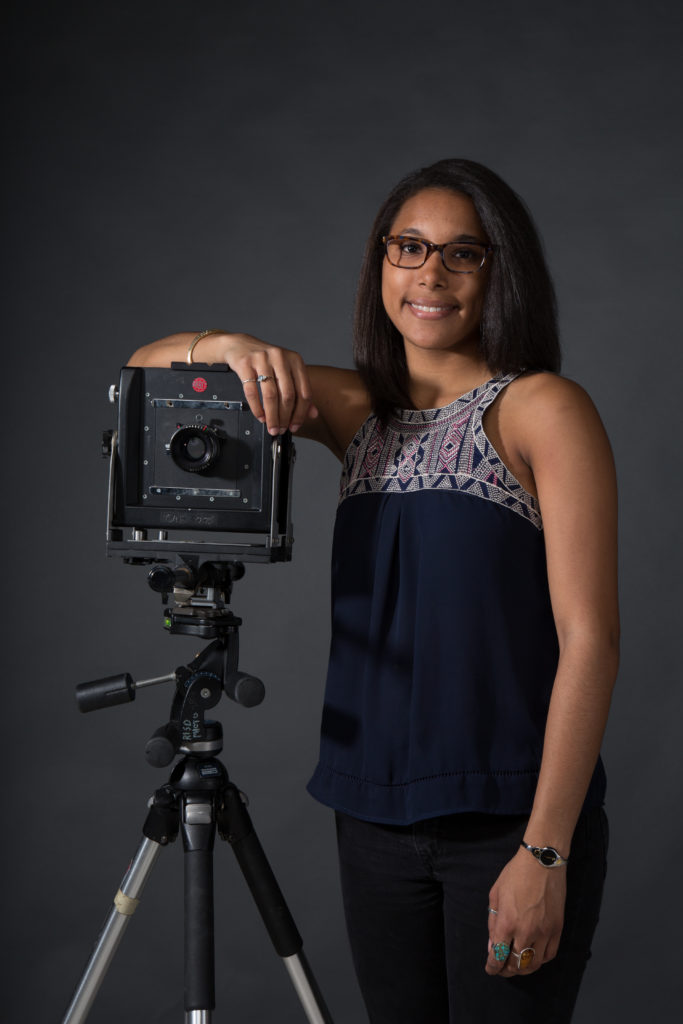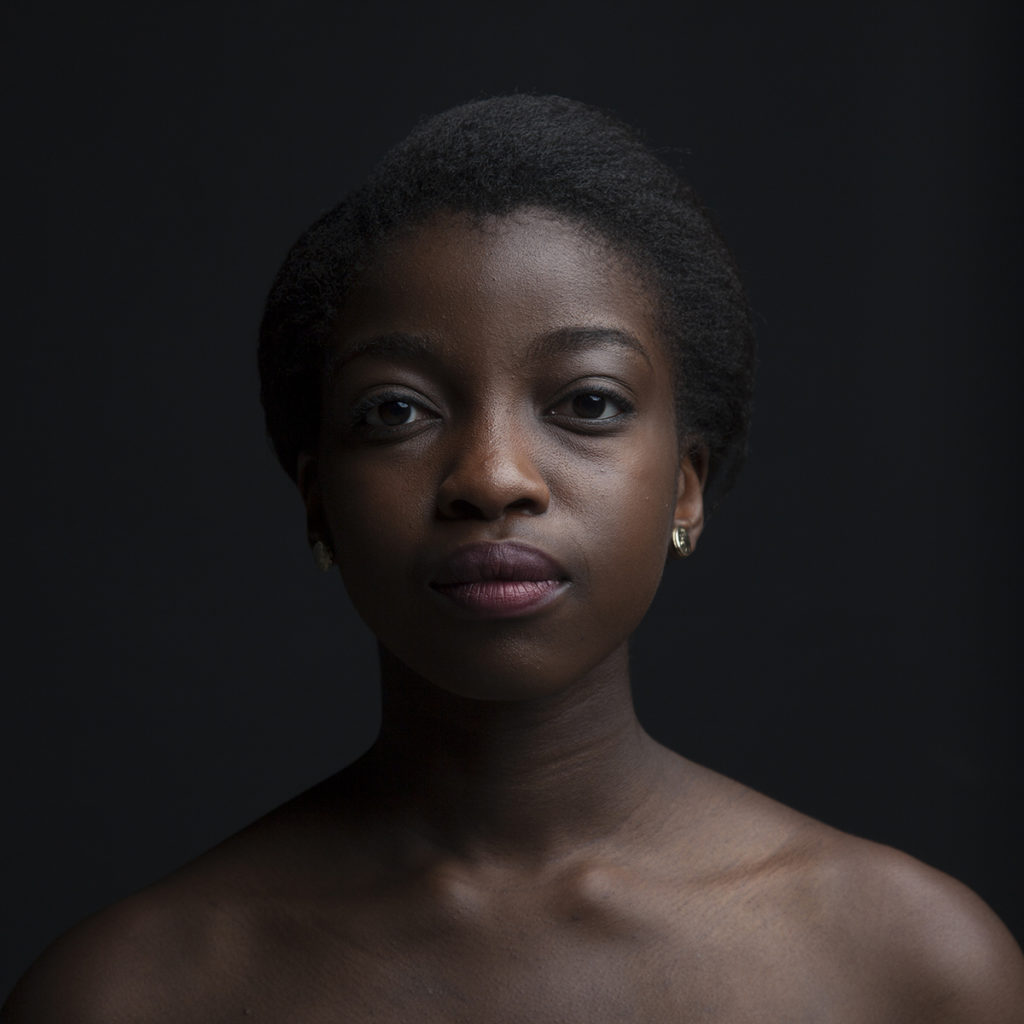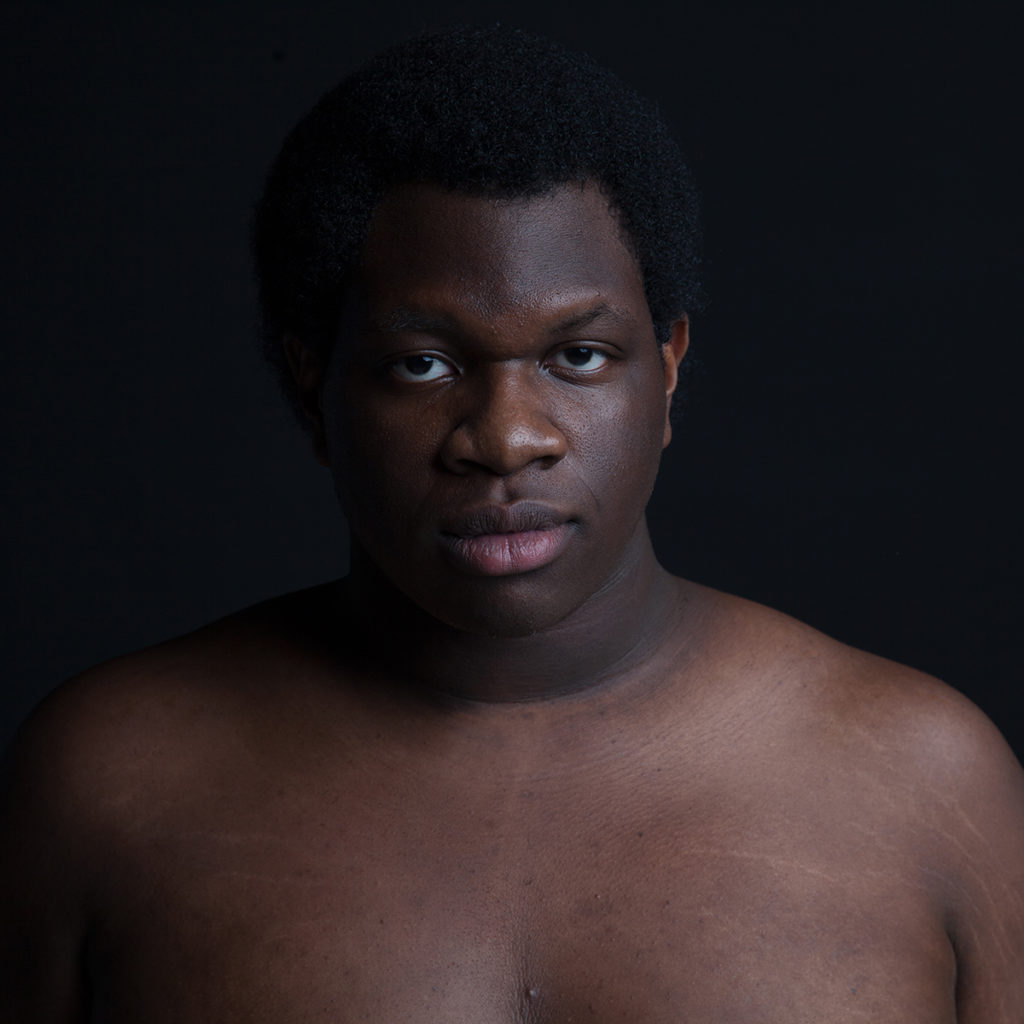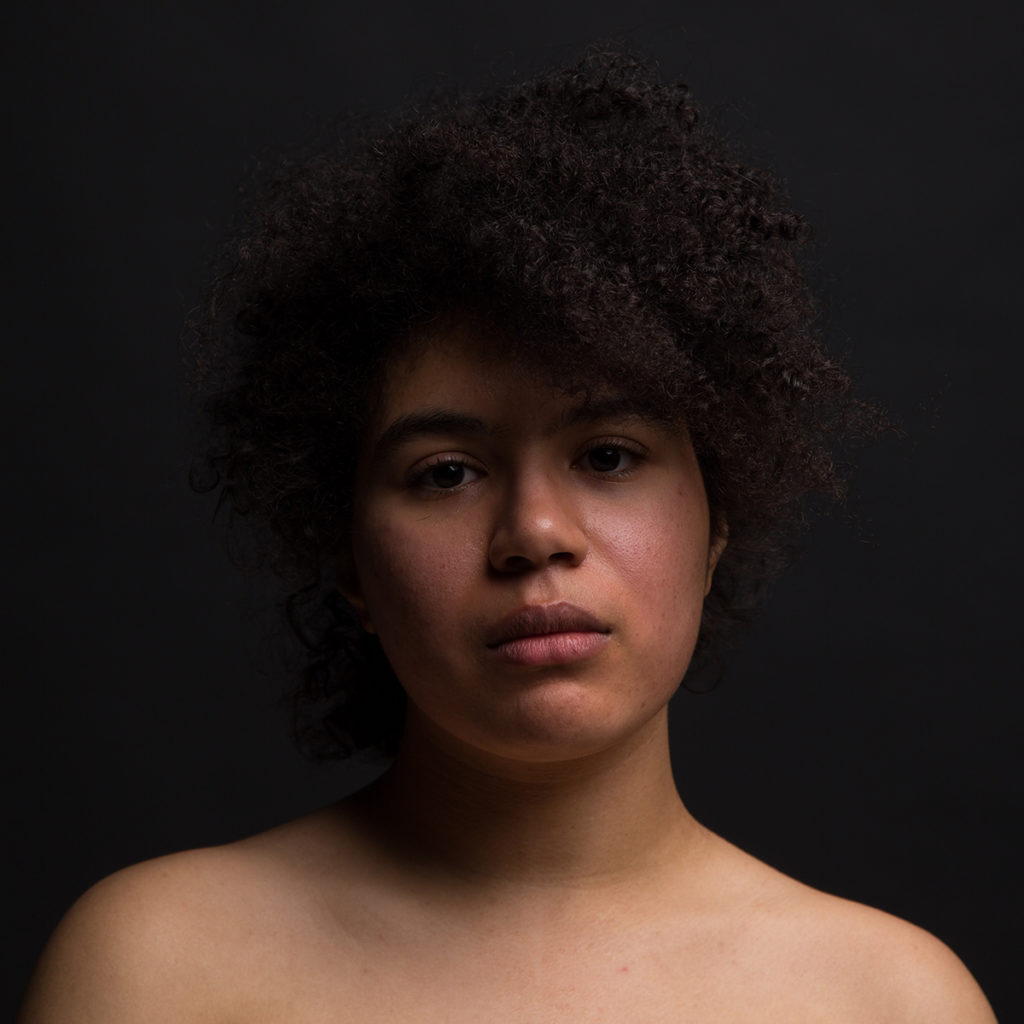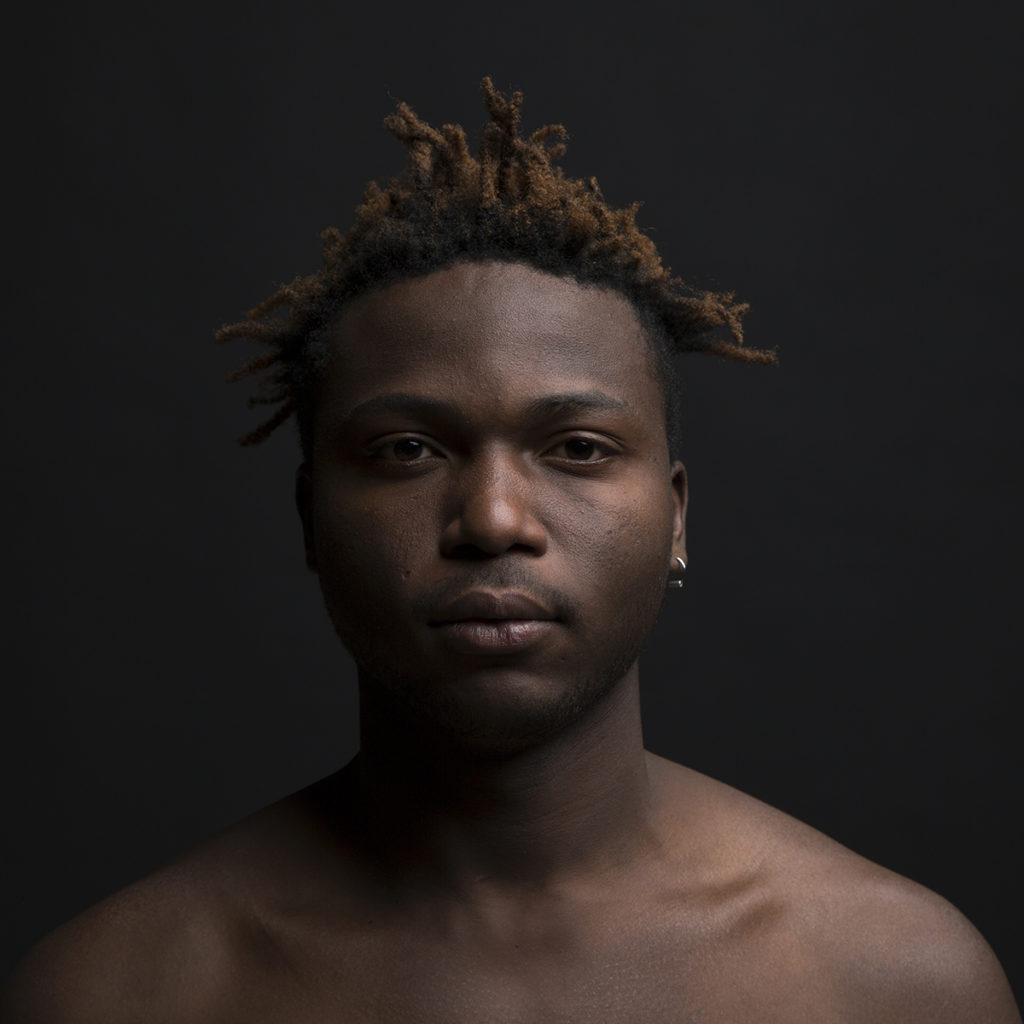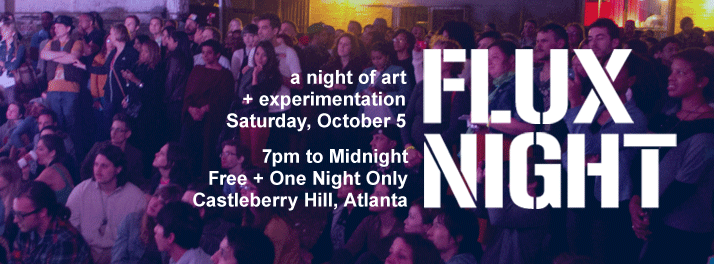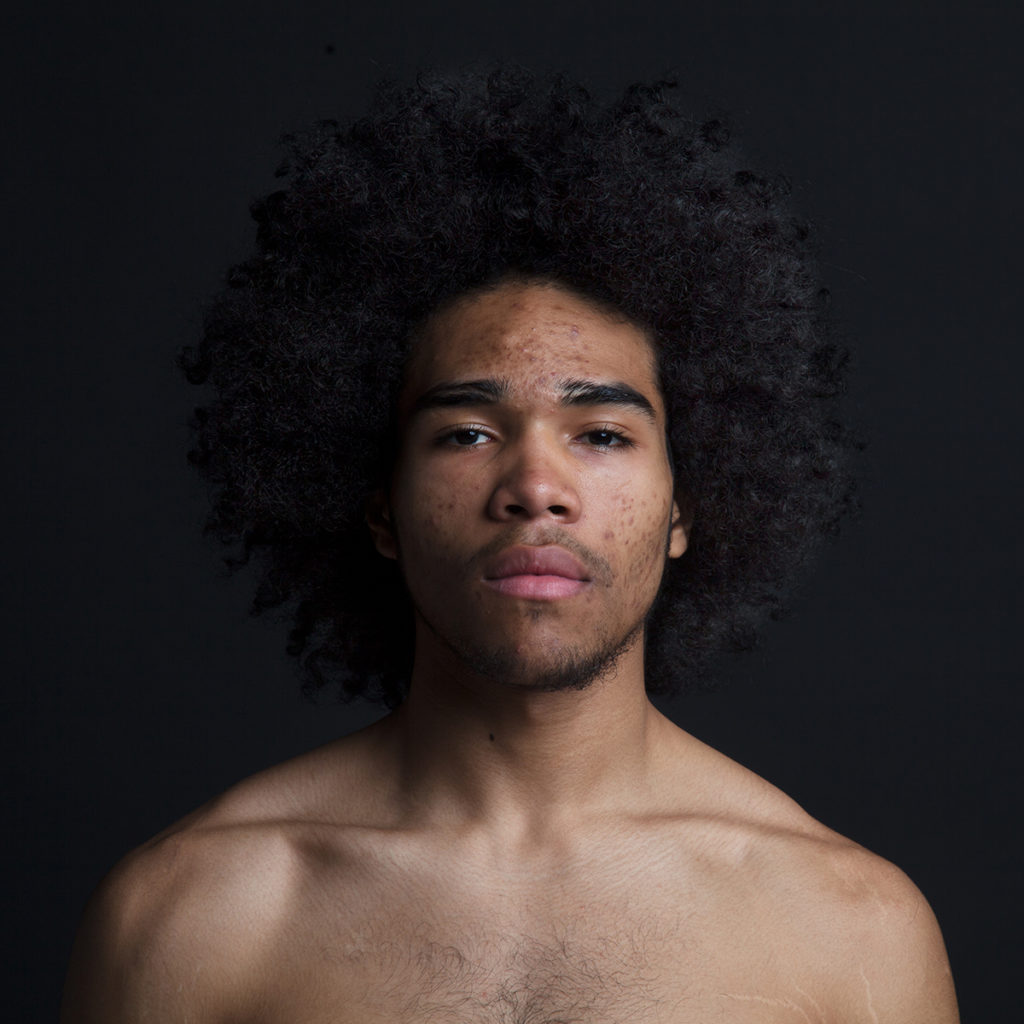 Nicole Buchanan‘s work invokes deep, vulnerable emotions — from sadness to pride and strength. In her work, you’re drawn into people’s eyes and the story behind them (the same can be said for Buchanan herself). In her latest photography series, The Skin I’m In, she explores the concept of race and how innocent individuals are often stereotyped because of their skin color — a timely subject, indeed. Recently, she announced that a selection from the series was acquired by the Rhode Island School of Design’s Museum of Art for their permanent collection.
Nicole Buchanan‘s work invokes deep, vulnerable emotions — from sadness to pride and strength. In her work, you’re drawn into people’s eyes and the story behind them (the same can be said for Buchanan herself). In her latest photography series, The Skin I’m In, she explores the concept of race and how innocent individuals are often stereotyped because of their skin color — a timely subject, indeed. Recently, she announced that a selection from the series was acquired by the Rhode Island School of Design’s Museum of Art for their permanent collection.
The Atlanta native moved away to attend RISD and found great success while studying there. She has shown her work at Harvard University, Griffin Museum of Photography, Woods Gerry Gallery, and elsewhere. Now, she brings the conversation back to ATL, where she has fully jumped into the arts scene. Her upcoming work follows local immigration entrepreneurs and how their efforts go unnoticed. Buchanan is ready to spark important conversations — and we’re listening.
Here, Buchanan talks about coming back to Atlanta and immersing herself in the arts scene, why photography is a great medium to instigate change, and why she makes art.
How did you end up in Atlanta, and how long have you been photographing here?
I have lived in Atlanta my whole life with the exception of attending college at Rhode Island School of Design. I’ve been a photographer here in Atlanta for 10 years. Photography entered my life when I was 12 years old. My grandfather taught me about exposure and how to use his Pentax k1000 properly.
You consider yourself a storyteller. As a photographer, how do you tell your subject’s story?
I’m drawn in by people’s character. For me, it shows in their eyes the way they move and how they interact with others. My ability to tell my subject’s story starts with trust. Developing a mutual trust allows the raw story to come out naturally. You can really see this trust in each image, which is an important part of my practice.
Your series “The Skin I’m In” was recently exhibited in Boston. What was the concept behind it?
I have been working on “The Skin I’m In” for over a year during my time at Rhode Island School of Design. It began with my own personal feelings of being culturally displaced and was seeking a community within RISD. As an artist, I wanted my photographic portraits to express my hope for peace and my outrage at the unfair treatment of seemingly innocent individuals. “The Skin I’m In” asks the viewer to consider the dignity of individuals who self-identify as African, African-American or from the wider African Diaspora in uniformly posed solo portraits taken in a luminous, romantic light.
Upon graduating from RISD, I was offered representation at Gallery Kayafas in Boston. Arlette Kayafas was really excited about my work, and that led to the recent exhibition showcasing my work to the wider public in a gallery-oriented context.
Your work is heavily portraiture. What kind of subjects do you like to concentrate on?
Portraiture has always been my preferred form of photography. Large amounts of information about an individual are left behind in a photograph. You can tell a lot about a person by the way they exist in an image. I like to concentrate on individuals or groups of people who don’t normally get noticed by society. Sometimes people don’t take the time to speak to these people. I make a point to do so and, through that, I gain access to what most people ignore and don’t take the time to uncover. I also want to uncover information about world conflicts and events that can only be told through the eyes of individuals rather than what is shown in the news.
What discussions do you hope your photography will spark?
I hope my photography will spark discussions about race relations and social conflicts around the world that are hidden by assumptions made on the news. I want to show the real story, the honest truth to everyone reading the newspaper with their morning coffee and those who, like clockwork, watch the evening news at 6 p.m. every night. Those are the very people who continue to perpetuate the stereotypes about the conflicts here at home, as well as across the world.
Why is photography a good medium to inspire world change?
We live in an era where people are looking at millions of images a day, whether it’s on the internet or social media apps such as Instagram or Pinterest. I believe that using a mechanism that people are already interacting with will give an advantage to trying to help bring awareness to current events that are happening around the world.
Who inspires you?
My mother, who introduced art to me at a very young age. She went to RISD as well and studied Illustration. My grandfather continues to push me to try new things with my photography, whether that’s new equipment or just trying different ideas. I’m also inspired by photographers who came before me: Gordon Parks, Dawood Bey, Jim Alexander, Roy Decarava, and Steve McCurry. This is just a short list, it definitely goes on and on.
Do you have any dream collaborations with other local artists?
If it were possible, I’d love to go back and meet Gordon Parks and see how he sees the world. I met a mentee of Parks’, Jim Alexander, and we became great friends as I helped archive his collection.
How do you promote yourself?
I use Instagram, Facebook, and by personal website. I think having a place where people can look at a collection of your work is really important. Whether it’s easily accessible through Instagram or having a formal website, it’s very imperative when speaking to people about being a photographer or an artist — you have to have a place to send them to look at your work if you don’t physically have any with you to show.
What do you think about Atlanta’s current creative scene?
I think it’s up and coming, growing very quickly. When I moved back home from art school, getting to know the art community here in Atlanta was a priority. I wanted to find people I could show my work to and continue an environment to get critiques.
When you moved back to Atlanta, what were some things you did to get immersed in the art community?
I started reaching out to photographers on Instagram to meet for coffee and chat about photography and what they would advise for a recent college graduate. My mother’s friend from high school knew a gallery owner here in Atlanta, Arnika Dawkins, and arranged for a meeting. I brought my work to speak with her about and show her prints as well. Afterward, she invited me to be a part of her group show entitled, “On Being Black.” At the opening, I had the pleasure of meeting many fine photographers including Jim Alexander, Renee Cox, Deb Willis, and more. I began meeting them also outside of the opening to speak with about developing my photography career. I also began working for Jim Alexander.
My point is, reaching out and asking for help from family and friends really helps. It’s all about who you know. You won’t know who your family or friends may know if you don’t reach out and ask. My advice would also be to go to exhibition openings. You are able to speak with other artists and collectors, and you may even run into curators that would be interested in seeing your work.
What’s next for you?
I will be showing my collection, “The Skin I’m In,” at the Davis Orton Gallery in Hudson, New York, this fall. I’ve also been working on a project showcasing local immigrant entrepreneurs. Their efforts go unnoticed, however, they are dedicated and work very diligently to support their families.
Why do you make art?
I make art to give others a voice, to share the stories that go untold. The world needs to know these stories and what is happening in every country, honestly and truthfully. There shouldn’t be any assumptions, lies or stereotyping by the media. My work is dedicated to educating the world on issues that have proved to be difficult to discuss, such as race and identity, and that not every South East Asian and Middle Eastern country is more dangerous than walking outside your door and getting into your car every morning.
You can see more of Nicole Buchanan’s work on her personal site or her Instagram.

